Regular Use of Ivermectin as Prophylaxis for COVID-19 Led Up to a 92% Reduction in COVID-19 Mortality Rate in a Dose-Response Manner: Results of a Prospective Observational Study of a Strictly Controlled Population of 88,012 Subjects
- PMID: 36196304
- PMCID: PMC9525042
- DOI: 10.7759/cureus.28624
Regular Use of Ivermectin as Prophylaxis for COVID-19 Led Up to a 92% Reduction in COVID-19 Mortality Rate in a Dose-Response Manner: Results of a Prospective Observational Study of a Strictly Controlled Population of 88,012 Subjects
Abstract
Background We have previously demonstrated that ivermectin used as prophylaxis for coronavirus disease 2019 (COVID-19), irrespective of the regularity, in a strictly controlled citywide program in Southern Brazil (Itajaí, Brazil), was associated with reductions in COVID-19 infection, hospitalization, and mortality rates. In this study, our objective was to determine if the regular use of ivermectin impacted the level of protection from COVID-19 and related outcomes, reinforcing the efficacy of ivermectin through the demonstration of a dose-response effect. Methods This exploratory analysis of a prospective observational study involved a program that used ivermectin at a dose of 0.2 mg/kg/day for two consecutive days, every 15 days, for 150 days. Regularity definitions were as follows: regular users had 180 mg or more of ivermectin and irregular users had up to 60 mg, in total, throughout the program. Comparisons were made between non-users (subjects who did not use ivermectin), and regular and irregular users after multivariate adjustments. The full city database was used to calculate and compare COVID-19 infection and the risk of dying from COVID-19. The COVID-19 database was used and propensity score matching (PSM) was employed for hospitalization and mortality rates. Results Among 223,128 subjects from the city of Itajaí, 159,560 were 18 years old or up and were not infected by COVID-19 until July 7, 2020, from which 45,716 (28.7%) did not use and 113,844 (71.3%) used ivermectin. Among ivermectin users, 33,971 (29.8%) used irregularly (up to 60 mg) and 8,325 (7.3%) used regularly (more than 180 mg). The remaining 71,548 participants were not included in the analysis. COVID-19 infection rate was 49% lower for regular users (3.40%) than non-users (6.64%) (risk rate (RR): 0.51; 95% CI: 0.45-0.58; p < 0.0001), and 25% lower than irregular users (4.54%) (RR: 0.75; 95% CI: 0.66-0.85; p < 0.0001). The infection rate was 32% lower for irregular users than non-users (RR: 0.68; 95% CI: 0.64-0.73; p < 0.0001). Among COVID-19 participants, regularusers were older and had a higher prevalence of type 2 diabetes and hypertension than irregular and non-users. After PSM, the matched analysis contained 283 subjects in each group of non-users and regular users, between regular users and irregular users, and 1,542 subjects between non-users and irregular users. The hospitalization rate was reduced by 100% in regular users compared to both irregular users and non-users (p < 0.0001), and by 29% among irregular users compared to non-users (RR: 0.781; 95% CI: 0.49-1.05; p = 0.099). Mortality rate was 92% lower in regular users than non-users (RR: 0.08; 95% CI: 0.02-0.35; p = 0.0008) and 84% lower than irregular users (RR: 0.16; 95% CI: 0.04-0.71; p = 0.016), while irregular users had a 37% lower mortality rate reduction than non-users (RR: 0.67; 95% CI: 0.40-0.99; p = 0.049). Risk of dying from COVID-19 was 86% lower among regular users than non-users (RR: 0.14; 95% CI: 0.03-0.57; p = 0.006), and 72% lower than irregular users (RR: 0.28; 95% CI: 0.07-1.18; p = 0.083), while irregular users had a 51% reduction compared to non-users (RR: 0.49; 95% CI: 0.32-0.76; p = 0.001). Conclusion Non-use of ivermectin was associated with a 12.5-fold increase in mortality rate and a seven-fold increased risk of dying from COVID-19 compared to the regular use of ivermectin. This dose-response efficacy reinforces the prophylactic effects of ivermectin against COVID-19.
Keywords: coronavirus; coronavirus disease 2019; covid-19; ivermectin; ivermectin (ivm); prevention; prophylaxis; rtpcr-sars-cov-2; sars-cov-2.
Copyright © 2022, Kerr et al.
Conflict of interest statement
Lucy Kerris is a paid consultant for both Vitamedic, an ivermectin manufacturer, and is co-founder, as well as acting as a paid consultant, for Médicos Pela Vida (MPV), an organization that promotes ivermectin as a treatment for COVID-19 and discourages COVID-19 vaccination. Flavio A. Cadegiani was a paid consultant (USD 1,600.00) for Vitamedic, an ivermectin manufacturer. Dr. Cadegiani is a founding member of the Front Line COVID-19 Critical Care Alliance (FLCCC), an organization that promotes ivermectin as a treatment for COVID-19. Pierre Kory is the President and Chief Medical Officer of the Front Line COVID-19 Critical Care Alliance (FLCCC), an organization that promotes ivermectin as a treatment for COVID-19 and discourages COVID-19 vaccination. Dr. Kory reports receiving payments from FLCCC. In February of 2022, Dr. Kory opened a private telehealth fee-based service to evaluate and treat patients with acute COVID, long-haul COVID, and post-vaccination syndromes. Dr. Kory expresses personal points of view against COVID-19 vaccination. Jennifer A. Hibberd is a co-founder of the Canadian Covid Care Alliance and World Council for Health, both of which discourage vaccination and encourage ivermectin as a treatment for COVID-19. Juan J. Chamie-Quintero is a contributor to the Front Line COVID-19 Critical Care Alliance (FLCCC), lists the FLCCC as his employer on his LinkedIn page, and expresses personal points of view against COVID-19 vaccination.
Figures
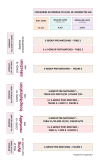
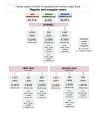

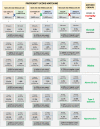
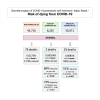
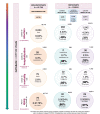
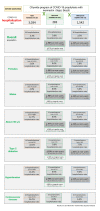
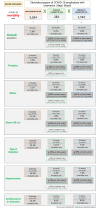
Similar articles
-
Ivermectin Prophylaxis Used for COVID-19: A Citywide, Prospective, Observational Study of 223,128 Subjects Using Propensity Score Matching.Cureus. 2022 Jan 15;14(1):e21272. doi: 10.7759/cureus.21272. eCollection 2022 Jan. Cureus. 2022. PMID: 35070575 Free PMC article.
-
Ivermectin as a SARS-CoV-2 Pre-Exposure Prophylaxis Method in Healthcare Workers: A Propensity Score-Matched Retrospective Cohort Study.Cureus. 2021 Aug 26;13(8):e17455. doi: 10.7759/cureus.17455. eCollection 2021 Aug. Cureus. 2021. PMID: 34513523 Free PMC article.
-
Use of Ivermectin Is Associated With Lower Mortality in Hospitalized Patients With Coronavirus Disease 2019: The Ivermectin in COVID Nineteen Study.Chest. 2021 Jan;159(1):85-92. doi: 10.1016/j.chest.2020.10.009. Epub 2020 Oct 13. Chest. 2021. PMID: 33065103 Free PMC article.
-
Ivermectin and mortality in patients with COVID-19: A systematic review, meta-analysis, and meta-regression of randomized controlled trials.Diabetes Metab Syndr. 2021 Jul-Aug;15(4):102186. doi: 10.1016/j.dsx.2021.102186. Epub 2021 Jun 27. Diabetes Metab Syndr. 2021. PMID: 34237554 Free PMC article.
-
Effect of Ivermectin prophylaxis in prevention of COVID 19: Meta-analysis and systematic review.J Family Med Prim Care. 2022 Nov;11(11):6660-6667. doi: 10.4103/jfmpc.jfmpc_527_22. Epub 2022 Dec 16. J Family Med Prim Care. 2022. PMID: 36993029 Free PMC article. Review.
Cited by
-
An Epidemiological Cross-sectional Study of Post-COVID-19 Syndrome in Patients of Anand District.Indian J Community Med. 2025 May-Jun;50(3):486-499. doi: 10.4103/ijcm.ijcm_109_23. Epub 2024 Oct 3. Indian J Community Med. 2025. PMID: 40511428 Free PMC article.
-
COVID-19 Excess Deaths in Peru's 25 States in 2020: Nationwide Trends, Confounding Factors, and Correlations With the Extent of Ivermectin Treatment by State.Cureus. 2023 Aug 8;15(8):e43168. doi: 10.7759/cureus.43168. eCollection 2023 Aug. Cureus. 2023. PMID: 37692571 Free PMC article.
References
-
- Ivermectin: enigmatic multifaceted 'wonder' drug continues to surprise and exceed expectations. Crump A. J Antibiot (Tokyo) 2017;70:495–505. - PubMed
LinkOut - more resources
Full Text Sources
Miscellaneous
